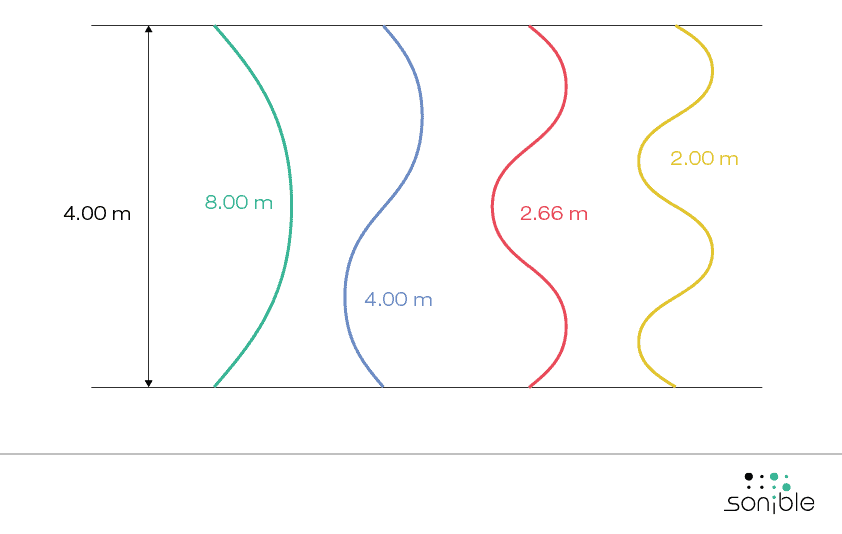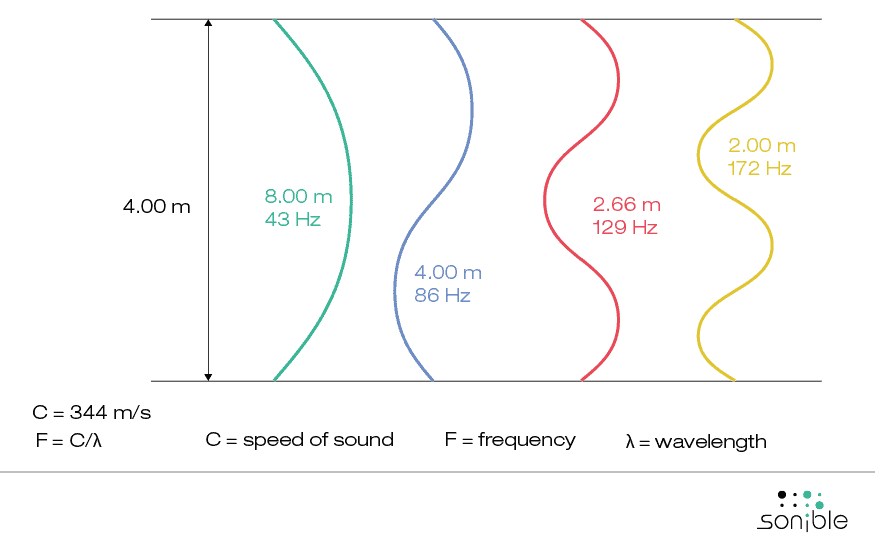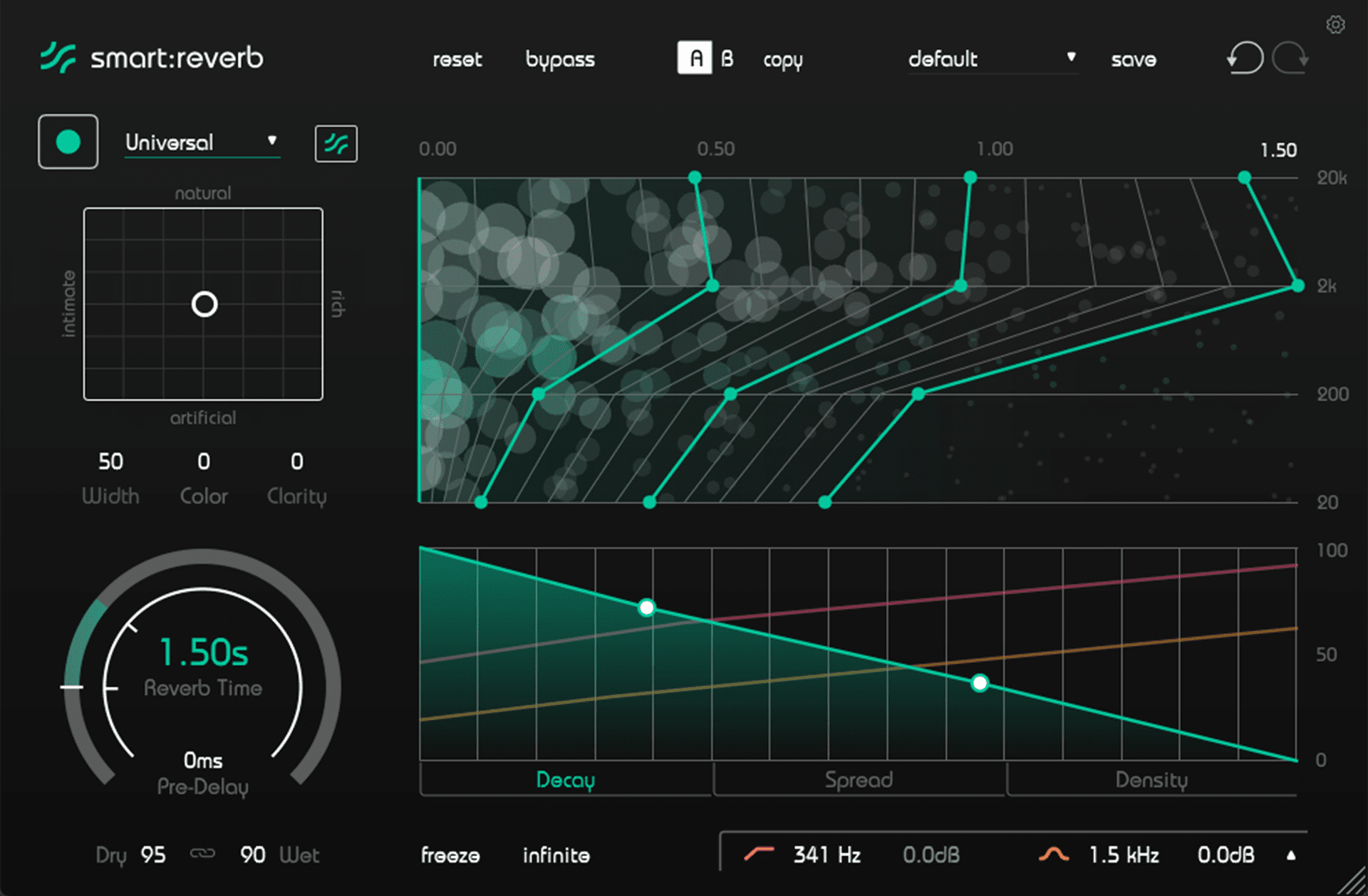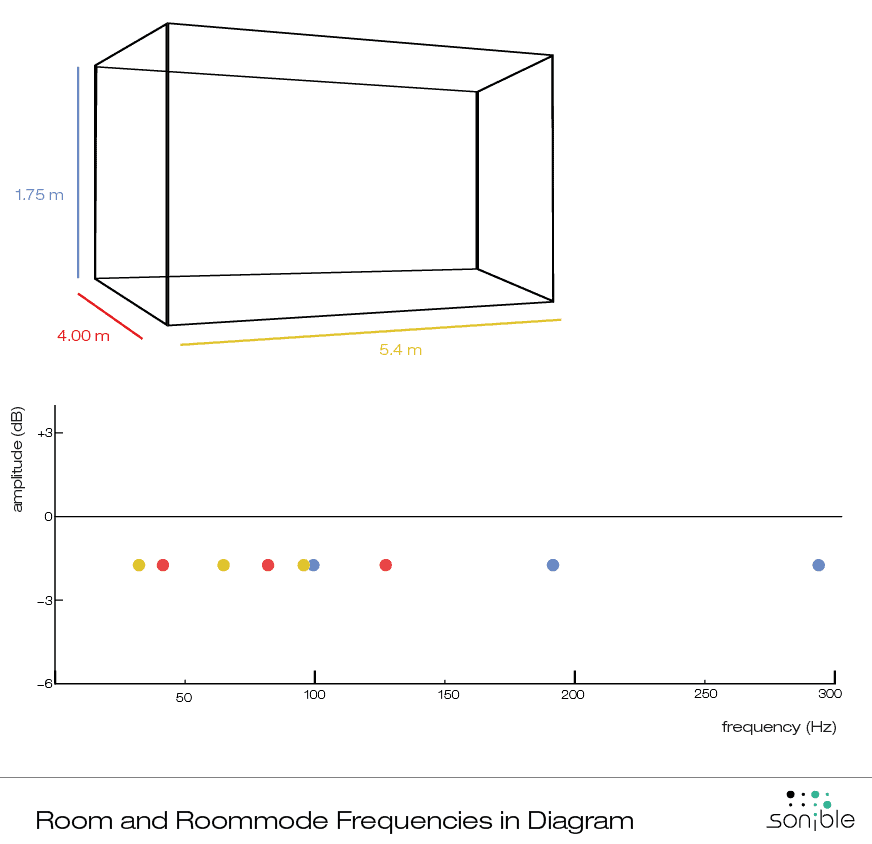Bad bass, resonant room – it’s all in the acoustics, and often due to your room’s very dimensions. Here’s where room modes come from…
Note: We replaced smart:reverb with smart:reverb 2! This content-aware reverb plug-in understands single tracks and entire mixes, helping you create exactly the reverb environment you imagine.
Have you ever been in a room with poor acoustics? Has someone advised you to install bass traps in your studio? Do you like how your voice sounds in the shower? A chief reason for any of these could be room modes.
Although they’re not the only factor at play on room acoustics and studio acoustics, room modes have a significant influence on both. In this article, we will explain what room modes are, how they arise, and how you can react when you understand their effects.
By the way – we covered How to Deal with Room Modes in a previous article, but for now, here’s a more in-depth explanation of what they are and what causes them.
Room modes arise from the resonances that occur due to the size of a room and the distances between its walls. As these modes accumulate, they create a distinct resonant frequency profile for the room, primarily in the bass range up to approximately 300Hz.
Assuming for example that your room measures 4.00 meters in length, this dimension will precisely fit a soundwave with a wavelength of 4.00 meters between those two walls. They’ll will also fit a soundwave with the wavelength 8.00 meters, sort of ‘folding’ it between the two walls at its nodes. This dimension of 4.00 meters will also precisely fit other wavelengths, including 2.66 meters and 2.00 meters, as you can see in the figure below.. When sound waves fit perfectly into a space in this way, they create ‘standing waves’ thanks to the phenomenon of acoustic resonance. The exact same principles are in play in the way that instruments like trumpets, pipe organs and flutes work – standing waves are produced due to resonance. When an instrument’s length is changed, the wavelength of the standing wave changes, and we get a different note. Since instruments are small and their dimensions are finely tuned, the sound is usually pleasant… but large rooms are rarely tuned.
When sound waves fit perfectly into a space in this way, they create ‘standing waves’ thanks to the phenomenon of acoustic resonance. The exact same principles are in play in the way that instruments like trumpets, pipe organs and flutes work – standing waves are produced due to resonance. When an instrument’s length is changed, the wavelength of the standing wave changes, and we get a different note. Since instruments are small and their dimensions are finely tuned, the sound is usually pleasant… but large rooms are rarely tuned.
Let’s get back to our room with walls 4.00 meters apart. For every wavelength, there is a corresponding frequency. Our 8.00m, 4.00m, 2.66m and 2.00m standing waves have frequencies at 43Hz, 86Hz, 129Hz and 172Hz. We can get the frequency by dividing the speed of sound (we’ll assume it’s 344 meters per second) by each wavelength measurement.
We can get the frequency by dividing the speed of sound (we’ll assume it’s 344 meters per second) by each wavelength measurement.
These resonances are the room modes that are generated by this specific dimension of 4.00 meters between two walls. When these sonic frequencies are present in the room, they will be either reinforced and reduced, depending on your location in the room. They’ll either be louder and take more time to die down, or be far less powerful than they should be. This is a contributing factor that defines the character of a reverberant space.
In the realm of music production, every sound has its unique frequency profile, consisting of multiple frequencies or specific frequency bands that are more or less resonant. When we play, record, or simulate an instrument with its unique notes and resonances in a room, which has its specific resonances, certain frequencies may be overly emphasized, while others may be undesirably attenuated. In essence, a room behaves like an EQ, altering the sound’s frequency response.
In theory, the ideal frequency response for a room would be entirely flat, meaning that the sound would be accurately reproduced without any frequency bands emphasized or attenuated by the room’s acoustics. This would result in added reverb that doesn’t favor any particular frequencies, and the signal would be accurately and faithfully reproduced.
A flat frequency response profile is practically impossible, but you can get closer or further away from the ideal by treating your space.
With our own plugin, smart:reverb, you can analyze the frequency profile of your audio channel, and the plugin will design you a room that complements your source.
When doing this, the source is analyzed for its frequency profile, and a room with the inverse profile is generated as your environment. This reduces the number of long-ringing frequencies, damping the reverb where your music is already prominent and letting it ring out where your music has less energy.
So far in our imaginary room, we’ve only mentioned a single pair of walls, 4.00 meters apart; but there’s more to consider when it comes to the acoustics of a room. Even a simple room has three dimensions – length, width, and height – and, therefore, more parallel walls that can support additional resonances. Each of these parallel walls has its specific spacing, which results in a unique set of resonant frequencies that it supports.
Now let’s say our room measures 4.00 meters by 5.40 meters by 1.75 meters. If we calculate the wavelengths (and therefore the resonant frequencies) created by the two ‘new’ walls, we end up with additional resonances at 31.9Hz, 63.7Hz, 95.6Hz and 127.4Hz (from 5.40 meters) and 98.3Hz, 196.6Hz, 294.9Hz and 393.1Hz (from 1.75 meters) This is quite the build-up of modes. As the number of bumps and notches in the frequency spectrum grows and grows, modes start to overlap, reinforcing and cancelling out.
This is quite the build-up of modes. As the number of bumps and notches in the frequency spectrum grows and grows, modes start to overlap, reinforcing and cancelling out.
It’s going to get worse before it gets better. As well as our three pairs of parallel walls, modes and standing waves can form between other combinations of walls. One might form between the front, left, back and right walls, for example; and another between the ceiling, front wall, floor and back wall, creating even more space to support larger wavelengths. And then, more spurious combinations of walls can support standing waves too.
But this can actually provide some relief from the resonant modes in a room. When so many modes build up thanks to multiple paths between walls, they can actually help to mitigate the resonances caused by any given pair of walls. The mess and chaos of so many resonances can calm things down, although whether it does will depend on a few things.
Actually, the highest frequencies listed above aren’t as much of a problem. Above 300Hz, as many harmonics of many modes tend to line up, resonant peaks and troughs in the frequency spectrum tend to build up so much that they cancel out. Room modes are more of a bottom-end problem.
For a final layer of complexity, the resonances of modes don’t simply lead to boosted frequencies – they can also create attenuations. Wave interference patterns are usually demonstrated with light waves, but the same principles apply as sound waves interact throughout a room. Essentially, when a source or listener moves within a room, these interference patterns mean that the whole makeup of how room modes affect the frequency response will change as well.
Remember, the rooms we’ve been hypothesizing during this article are all perfect cubes with nothing in them. Whatever is actually placed within your room – including the human beings – will affect the frequency response. Even the material construction will have an effect, as different frequencies absorb by different amounts when they hit different materials.
Modes have an effect on the sound of a room, they’re unavoidable and present in every single room. They’re created due to the fact that a room has surfaces and dimensions, with every available dimension, every path of constant propagation for a wave, fitting in and resonating half a wavelength and its harmonics.
The quest to ‘solve’ room modes can be taken too far. If a room has a particularly bad set of resonances, then it can be treated or avoided. For a recording room, the resonances at play will contribute to the character of the sound generated, for better or for worse. A listening room requires more thought, and should tend closer towards the elusive ‘flat’ frequency profile. With modes as with all of music, chasing perfection has its place.